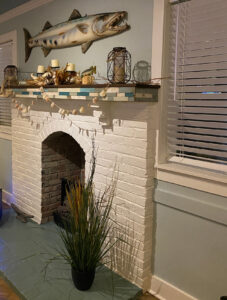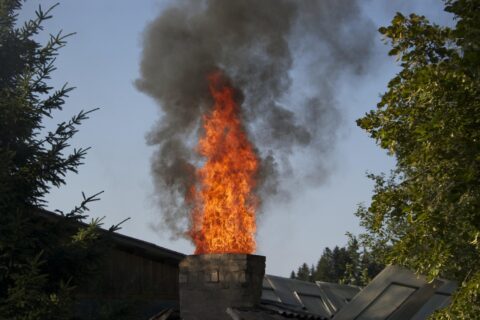Painting Your Fireplace: What To Know
 Painting the fireplace has become a popular do-it-yourself project for homeowners looking for an inexpensive way to update their home.
Painting the fireplace has become a popular do-it-yourself project for homeowners looking for an inexpensive way to update their home.
It’s true that painting the fireplace can revolutionize the look of your home. However, the choice of whether or not to do so requires careful consideration.
At first glance, painting a fireplace may appear to be a relatively easy DIY project. It’s not. It can take painstaking effort and requires planning and prep work.
Consider the quality of your brick.
In weighing whether or not to paint your fireplace, the first factor is the quality of your bricking. Bricks that are cracking, falling apart or molding should not be painted. Painting brick can worsen underlying moisture conditions by sealing up the surface.
Moreover, it is very difficult to remove paint from brick. Removing paint from brick requires special chemicals that may not completely eliminate the paint.
Preparing the area
If you decide to move forward, properly preparing the area to be painted helps make sure you won’t have to continuously retouch it. The first prep step is to seal any cracks and repoint joints. Clean the brick with soap and water and allow it to fully dry. Efflorescence is a whitish residue caused by salt. If your brick has any efflorescence, remove it using a stiff brush. Then, wait to make certain it does not reappear. Avoid using any cleaners that contain acid as these can lead to paint chipping.
You are ready to prime and paint once the brick has been cleaned and dried for 24 hours or longer.
Selecting the paint
Brick is a neutral material but the mortar surrounding it is alkaline. So, choose a primer that is alkaline-resistant. Some primers are specifically designed for brick.
The actual paint should be a quality latex interior paint. Just like with walls, selecting a neutral color will provide greater long-term appeal, especially if you decide to sell your home.
In order to properly complete the project, you may need to apply two or three coats of paint. Before using the fireplace, allow the paint to fully dry.
If you are considering painting your fireplace, ChimneyTEK is happy to consult on whether or not to do so, and how to paint your chimney successfully.


